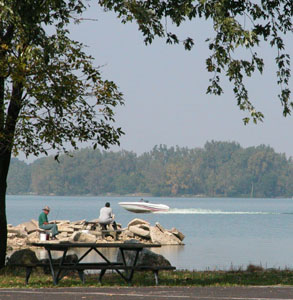By Shelley Grieshop
sgrieshop@dailystandard.com The warm, hazy days and cool nights upon us feel like the typical Indian summer of ancient folklore.

But is it? Experts on the subject say no.
"We haven't had it yet," local weather forecaster Dennis Howick says.
According to Howick and other weather gurus, a "squaw winter" -- a hard freeze and at least a dusting of actual snow -- must occur before Indian summer can be proclaimed.
Last week's touch of frost combined with a ground fog created a spectacular sunrise but didn't make the grade for a declaration of Indian summer in urban legend terms. "At least one killing frost and preferably a substantial period of normally cool weather must precede this warm spell in order for it to be considered a true Indian summer," the American Meteorological Society states.
The words "Indian summer" date back to the 18th century in the U.S. and are generally associated with any spell of warm, quiet weather that occurs mainly in October or early November.
In North America, it is explained that large slow-moving anticyclones (regions of high atmospheric pressure) fix over the eastern margins of the continent and block the weather systems associated with more seasonal weather.
But what does it have to do with Native Americans?
One theory is that tribesman chose the more pleasant time of year for major hunting trips so they could stock up on food for the winter. As the story goes, the haziness of the air gave the hunter an advantage to sneak up on his prey without being detected.
Of the many explanations for the phenomenon of the "second summer" as it is frequently called, none have been proven right or wrong.
October typically has extreme high and low swings, sometimes daily. Local record highs for this month are 89 degrees, recorded in 1963, down to a chilly 20 degrees, recorded in both 1962 and 1976.
As far as anyone can tell, the local area experiences an Indian summer each year -- sometimes several each autumn but many times only briefly for a day or two.
Howick stands by his opinion that the Grand Lake area is yet to experience this year's "fifth season."
"I first have to see that first snow," he says.
Maybe we shouldn't be in such a big hurry. |

